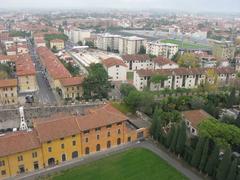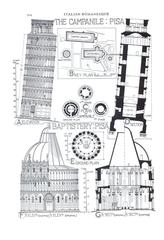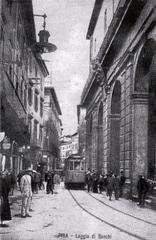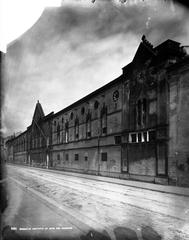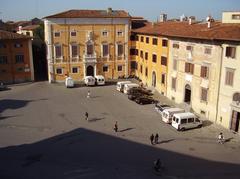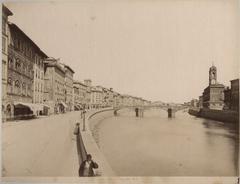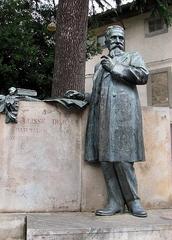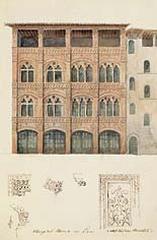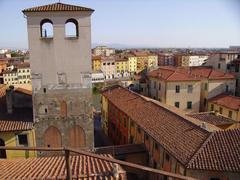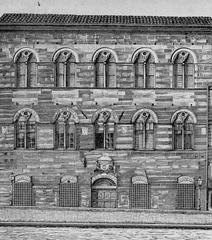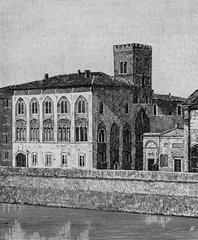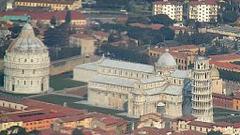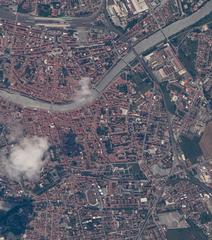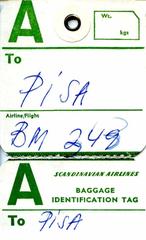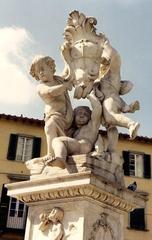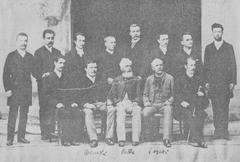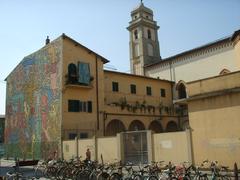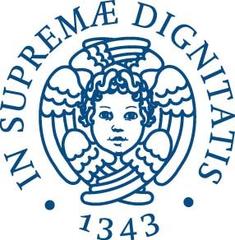Palazzo Mastiani Brunacci: Visiting Hours, Tickets, and Complete Guide to Historical Sites in Pisa
Date: 14/06/2025
Introduction
Palazzo Mastiani Brunacci stands as a remarkable emblem of Pisa’s layered history, architectural splendor, and cultural evolution. Nestled on Corso Italia, this neoclassical palace is not only a testament to centuries of aristocratic heritage but also a living witness to Pisa’s transformation from medieval stronghold to modern urban center. This comprehensive guide covers the palazzo’s historical significance, architectural highlights, practical visitor information—including visiting hours and ticketing—nearby attractions, and tips for a rewarding experience. For the most accurate, up-to-date information, consult the official tourism and cultural websites. (The Thinking Traveller, Wikipedia, Comune di Pisa)
Table of Contents
- Introduction
- Historical Overview
- Visitor Information
- Architectural and Artistic Highlights
- Nearby Attractions and Travel Tips
- Frequently Asked Questions (FAQ)
- The Mastiani-Brunacci Family: Legacy and Influence
- Social Innovation and Modernization
- Preservation, Contemporary Use, and Debates
- Plan Your Visit: How to Make the Most of Palazzo Mastiani Brunacci
- Sources and Further Reading
Historical Overview
Origins and Early Development
Palazzo Mastiani Brunacci traces its origins to the 14th century, commissioned by the influential Mastiani family. Designed for both security and prestige, the original structure featured fortified elements characteristic of medieval Pisa: thick stone walls, narrow windows, and a central courtyard. Its location near the Arno River and Pisa’s commercial arteries underscored its strategic and economic importance during a period of intense competition among Tuscan city-states.
Renaissance and Baroque Transformations
With Pisa’s integration into the Florentine domain in the 16th century, the Mastiani family renovated the palace in line with Renaissance ideals. Symmetrical façades, arched windows, decorative cornices, and a grand staircase were added, transforming the building into a showcase of elite taste and cultural engagement. The Renaissance expansion was followed by Baroque embellishments in the 17th century, after the Mastiani merged with the Brunacci family. The palace received ornate stucco work, gilded mirrors, elaborate ceiling frescoes, and a more pronounced entrance portal, all serving to communicate the family’s status and sophistication (The Thinking Traveller).
Nineteenth-Century Cultural Hub
In the 19th century, under Countess Elena Mastiani Brunacci, the palazzo became a renowned center for intellectual and artistic gatherings, attracting luminaries such as Giacomo Leopardi and Vittorio Alfieri. The palace’s 118 rooms and 20 salons provided an opulent setting for lavish social events, reinforcing Pisa’s reputation as a center of culture and cosmopolitanism (La Nazione). Architect Alessandro Gherardesca’s renovations established the neoclassical appearance that dominates today.
Modern Adaptations and Preservation
From the 20th century, Palazzo Mastiani Brunacci adapted to changing times: it was the first building in Pisa equipped with electricity and hosted the city’s first cinema, the Cinematografo Artistico, in 1905. Later, it served as the headquarters for the National Institute for Social Security (INPS) and the University of Pisa’s Faculty of Computer Science (Wikipedia). Restoration efforts in the 1960s and 1990s focused on preserving the palazzo’s artistic and architectural integrity, in accordance with Italian heritage laws.
Visitor Information
Visiting Hours
Palazzo Mastiani Brunacci does not operate with regular museum hours due to its evolving ownership and functions. Public access is traditionally granted during special city events (such as “Pisan June” or European Heritage Days), temporary exhibitions, or organized guided tours. For the latest opening times, always consult the Comune di Pisa’s official website or local tourist offices.
Tickets and Admission
- General Admission: Fees apply when the palace is open for tours or events. Typical prices are €8–10 for adults, with discounts for students, seniors, and children.
- Purchase: Tickets are usually available online or at the entrance during public events. Advance booking is strongly recommended.
- Special Events: Some exhibitions or private tours may have different pricing.
Guided Tours and Accessibility
- Guided Tours: Offered in Italian and English during special openings and by appointment. Tours provide deep insights into the palazzo’s history, architecture, and art. Group sizes are limited due to preservation needs.
- Accessibility: The ground floor is generally accessible, but upper floors and certain historic areas may pose challenges for visitors with mobility needs. Contact the visitor center to discuss specific requirements.
Tips for Visitors
- Check official sources ahead of your visit for any changes or special closures.
- Arrive early to avoid crowds during events.
- Photography is typically allowed outside and in selected interior areas (no flash or tripods).
- There are no on-site visitor facilities; nearby cafés and shops on Corso Italia provide amenities.
- Combine your visit with other Pisa landmarks for a full cultural itinerary.
Architectural and Artistic Highlights
- Façade: Neoclassical symmetry, rusticated portals, and the Mastiani-Brunacci coat of arms.
- Salone delle Feste: Hall of Festivities with 18th-century frescoes.
- Grand Staircase: Elegant curves, ornate balustrades, and natural light, exemplifying 19th-century design.
- Period Details: Stucco ceilings, carved fireplaces, and original decorative elements.
- Historic Artworks: The palace once housed busts of Napoleon and Grand Duchess Elisa by Lorenzo Bartolini. While not always on display, their legacy enriches the site’s narrative.
Nearby Attractions and Travel Tips
- Piazza dei Cavalieri: A historic square featuring the Palazzo della Carovana and Scuola Normale Superiore.
- Arno River: Scenic walks and historic bridges just minutes away.
- Leaning Tower & Piazza dei Miracoli: Pisa’s iconic UNESCO World Heritage Site, about a 20-minute walk.
- Museo di San Matteo & Palazzo Blu: Art museums with collections from medieval to contemporary eras.
Transport: Palazzo Mastiani Brunacci is a 10–15-minute walk from Pisa Centrale station and is well-served by local buses. Parking is available in nearby garages.
Safety: Pisa is generally safe, but Corso Italia can be crowded; remain vigilant against pickpocketing (Nomadic Matt).
Frequently Asked Questions (FAQ)
Q: What are Palazzo Mastiani Brunacci’s visiting hours?
A: There are no regular public hours. Access is available during special events or guided tours; always check official sources.
Q: Are guided tours available?
A: Yes, during special openings and by appointment. Reserve in advance.
Q: Is the palazzo wheelchair accessible?
A: The ground floor is generally accessible; upper floors may be challenging.
Q: Are tickets required?
A: Yes, for special events or tours. Fees and availability vary.
Q: Can I take photos?
A: Photography is permitted outside and, in some cases, inside (no flash or tripods). Always ask staff for current policies.
The Mastiani-Brunacci Family: Legacy and Influence
The Mastiani-Brunacci family rose to prominence as merchants and later as members of the nobility, thanks to strategic marriages and involvement in Tuscany’s economic and political life. By the 18th and 19th centuries, they counted among Pisa’s leading families, holding public offices and amassing significant influence. Notably, Giovan Francesco Mastiani served as Chamberlain and was made Count of the Empire by Napoleon (La Nazione, Brunacci.it).
Countess Elena Mastiani Brunacci’s 19th-century salon solidified the palazzo’s role as a cultural nexus, attracting intellectuals and aristocrats from across Europe (Wikipedia).
Social Innovation and Modernization
Palazzo Mastiani Brunacci embraced early modernity, being the first building in Pisa with electricity and a pioneer venue for cinema. Its flexible design allowed for adaptation to new uses throughout the 20th century, reflecting the city’s broader social and technological evolution (Wikipedia; Turismo Pisa).
Preservation, Contemporary Use, and Debates
After the Mastiani-Brunacci family line ended in 1951, the palazzo changed hands several times and served as an institutional headquarters. Its 2023 sale to a private company sparked local debate over the privatization of Pisa’s heritage sites and the need to balance preservation with contemporary use (Una Città in Comune). The building continues to inspire civic engagement and remains a potent symbol of Pisa’s urban identity.
Plan Your Visit: How to Make the Most of Palazzo Mastiani Brunacci
- Check for Special Openings: Monitor official tourism channels and event listings for upcoming public access opportunities.
- Combine with Nearby Sites: Enhance your itinerary with visits to surrounding landmarks.
- Download the Audiala App: For guided content, virtual tours, and real-time updates.
- Engage Respectfully: Follow etiquette, respect preservation guidelines, and support ongoing conservation efforts.
- Stay Informed: Use credible sources for the latest information.
Sources and Further Reading
- Top 20 Things to Do in Pisa: A Complete Guide for 2025
- Palazzo Mastiani-Brunacci – Wikipedia
- Comune di Pisa Official Website
- La Nazione: Fasti e Segreti di Palazzo Mastiani
- Brunacci Family History
- Una Città in Comune: La Perdita di Palazzo Mastiani
- Turismo Pisa: The Artistic Cinema
- Savoring Italy: Pisa Travel Guide
- Nomadic Matt: Italy Travel Tips – Pisa
- UNESCO World Heritage Centre: Pisa
Conclusion
Palazzo Mastiani Brunacci remains one of Pisa’s most compelling historical landmarks, embodying centuries of architectural innovation, noble patronage, and cultural vibrancy. Though access is often limited to special events and guided tours, the palazzo’s striking façade, storied interiors, and central location make it a must-see for those eager to connect with Pisa’s aristocratic and artistic legacy. Plan ahead, utilize official resources, and embrace the opportunity to immerse yourself in the living history of this exceptional site.
